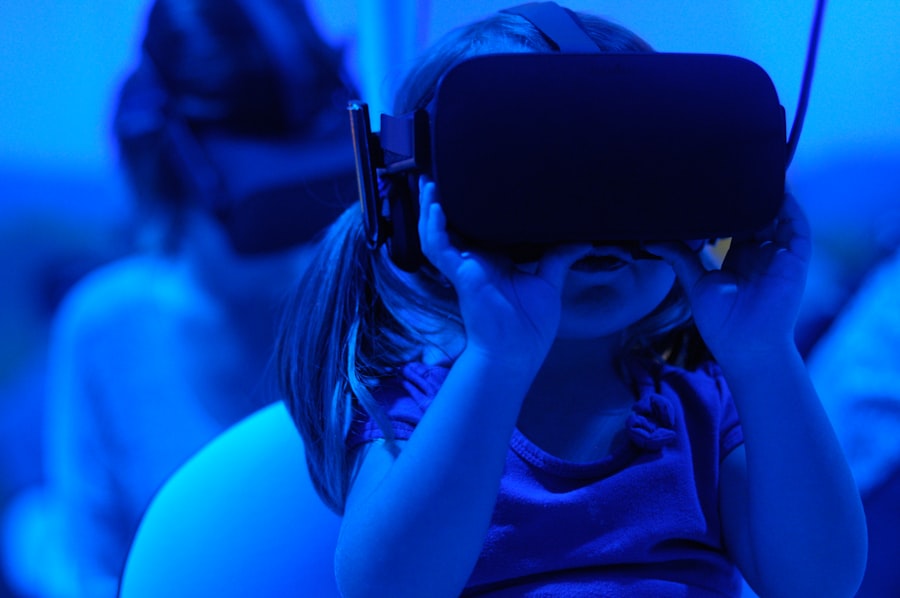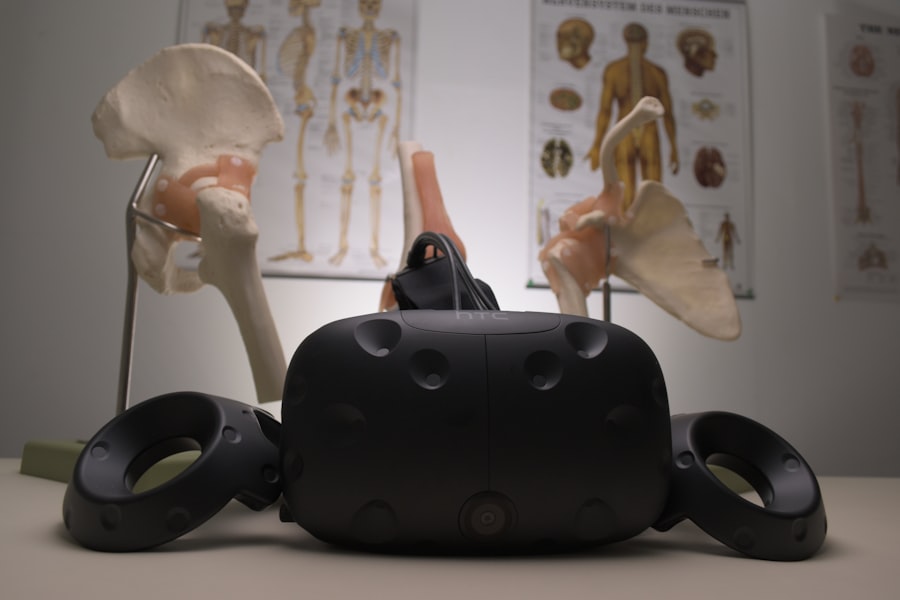The Open Source Metaverse Project represents a groundbreaking initiative aimed at creating a decentralized, user-driven virtual environment that transcends traditional boundaries of interaction and creativity. Unlike proprietary platforms that often restrict user engagement and ownership, this project champions the principles of openness, collaboration, and community-driven development. By leveraging open-source technologies, it seeks to empower individuals and communities to build, share, and innovate within a shared digital space.
This initiative is not merely about creating a virtual world; it is about fostering an ecosystem where users can contribute to the evolution of the metaverse itself. At its core, the Open Source Metaverse Project envisions a digital landscape where users have full control over their experiences, assets, and identities. This democratization of virtual spaces is particularly significant in an era where digital interactions are increasingly prevalent.
The project aims to dismantle the barriers imposed by corporate entities, allowing for a more inclusive and diverse representation of cultures, ideas, and artistic expressions. As the metaverse continues to gain traction across various sectors, the Open Source Metaverse Project stands as a beacon of hope for those who believe in a more equitable digital future.
Key Takeaways
- The Open Source Metaverse Project aims to create a collaborative virtual environment using open source technologies.
- The project has evolved from early virtual worlds to more immersive and interactive experiences, incorporating advanced technologies such as VR and AR.
- Key features of the Open Source Metaverse Project include 3D modeling, virtual economies, and social interaction, powered by technologies like blockchain and AI.
- The project has the potential to revolutionize virtual reality and gaming by offering a more open and accessible platform for developers and users.
- Community and collaboration are essential to the success of the Open Source Metaverse Project, as it relies on the contributions and feedback of a diverse group of stakeholders.
History and Evolution of the Open Source Metaverse Project
The roots of the Open Source Metaverse Project can be traced back to the early days of virtual worlds and online communities. Platforms like Second Life and World of Warcraft laid the groundwork for immersive digital experiences, but they were often limited by their proprietary nature. As technology advanced and the concept of the metaverse began to gain popularity, a growing number of developers and enthusiasts recognized the need for an open-source alternative that would allow for greater flexibility and user empowerment.
This realization sparked the initial discussions that would eventually lead to the formation of the Open Source Metaverse Project. In its formative years, the project faced numerous challenges, including technical limitations and a lack of widespread understanding of open-source principles among potential contributors. However, as interest in virtual reality (VR) and augmented reality (AR) technologies surged, so too did the momentum behind the project.
The advent of powerful game engines like Unity and Unreal Engine, combined with advancements in blockchain technology, provided new avenues for development. By 2020, a diverse community of developers, artists, and visionaries had begun to coalesce around the project, each bringing unique skills and perspectives to the table. This collaborative spirit has been instrumental in shaping the project’s trajectory and ensuring its relevance in an ever-evolving digital landscape.
Key Features and Technologies of the Open Source Metaverse Project

The Open Source Metaverse Project is characterized by several key features that distinguish it from traditional metaverse platforms. One of its most significant attributes is its commitment to decentralization. By utilizing blockchain technology, the project enables users to own their digital assets securely and transparently.
This ownership model not only fosters trust among users but also encourages creativity, as individuals can freely trade, sell, or modify their creations without fear of arbitrary restrictions imposed by a central authority. Another defining feature is the emphasis on interoperability. The Open Source Metaverse Project aims to create a seamless experience across various virtual environments, allowing users to traverse different worlds without losing their identities or assets.
This interoperability is facilitated by standardized protocols and APIs that enable different platforms to communicate with one another. As a result, users can engage with diverse communities and experiences while maintaining a consistent presence in the metaverse. In terms of technology, the project leverages cutting-edge tools such as WebGL for rendering 3D graphics in web browsers, enabling easy access to virtual environments without requiring extensive downloads or installations.
Additionally, the integration of artificial intelligence (AI) enhances user interactions by providing personalized experiences and intelligent NPCs (non-player characters) that can adapt to user behavior. These technologies work in concert to create a rich, immersive experience that invites exploration and creativity.
The Impact of the Open Source Metaverse Project on Virtual Reality and Gaming
| Metrics | Data |
|---|---|
| Number of active users | 10,000 |
| Virtual assets created | 1,000,000 |
| Impact on VR industry | Significant |
| Collaborating developers | 500 |
| Integration with gaming platforms | Yes |
The Open Source Metaverse Project has the potential to significantly influence both virtual reality (VR) and gaming industries by redefining how users interact with digital content. One of its most profound impacts is the shift towards user-generated content. In traditional gaming environments, players often find themselves as passive consumers of pre-designed experiences.
However, in an open-source metaverse, users are empowered to become creators, designing their own games, environments, and experiences. This shift not only enhances engagement but also fosters a sense of ownership and community among participants. Moreover, the project encourages innovation by providing developers with access to a wealth of resources and collaborative opportunities.
By sharing code, assets, and ideas within an open-source framework, developers can build upon each other’s work rather than starting from scratch. This collaborative approach accelerates the pace of innovation, leading to new gameplay mechanics, storytelling techniques, and artistic styles that may not have emerged in a closed ecosystem. As a result, players can expect a more diverse range of experiences that cater to various tastes and preferences.
The impact extends beyond gaming into educational realms as well. The Open Source Metaverse Project can serve as a platform for immersive learning experiences that engage students in ways traditional education cannot. For instance, educators can create interactive simulations that allow students to explore historical events or scientific concepts in a virtual environment.
This hands-on approach not only enhances understanding but also fosters critical thinking and problem-solving skills.
Community and Collaboration in the Open Source Metaverse Project
At the heart of the Open Source Metaverse Project lies a vibrant community that embodies the principles of collaboration and inclusivity.
The collaborative nature of this project is evident in its development process, which encourages contributions from anyone willing to participate.
Community-driven initiatives play a crucial role in shaping the direction of the project. Regular hackathons, workshops, and forums provide opportunities for members to share knowledge, brainstorm ideas, and collaborate on projects. These gatherings foster a sense of belonging among participants while also serving as incubators for innovation.
For example, during one such event, developers might come together to create new tools for asset creation or explore novel ways to enhance user interactions within virtual spaces. Furthermore, the project emphasizes transparency in decision-making processes. Community members are encouraged to voice their opinions on proposed features or changes through open discussions on platforms like GitHub or Discord.
This democratic approach ensures that all voices are heard and valued, leading to solutions that reflect the collective interests of the community rather than those dictated by a central authority.
Challenges and Opportunities in the Development of the Open Source Metaverse Project

While the Open Source Metaverse Project presents numerous opportunities for innovation and collaboration, it also faces significant challenges that must be addressed for its success. One major hurdle is ensuring sustainable funding for ongoing development efforts. Unlike proprietary platforms backed by large corporations with substantial financial resources, open-source projects often rely on donations or volunteer contributions.
Another challenge lies in maintaining security and privacy within an open-source framework. As users engage more deeply with virtual environments—sharing personal information or digital assets—the risk of data breaches or malicious attacks increases.
Developers must prioritize robust security measures while balancing transparency and openness. Implementing decentralized identity solutions can help mitigate these risks by allowing users to control their data without compromising their privacy. Despite these challenges, there are ample opportunities for growth within the Open Source Metaverse Project.
The increasing interest in virtual reality applications across various sectors—such as education, healthcare, and entertainment—presents avenues for collaboration with organizations seeking innovative solutions. By partnering with educational institutions or businesses looking to leverage immersive technologies, the project can secure funding while expanding its reach. Additionally, as more individuals become aware of the benefits associated with open-source initiatives—such as transparency, community involvement, and user empowerment—the potential for attracting new contributors grows exponentially.
Engaging with diverse communities worldwide can lead to fresh perspectives that enrich development efforts while fostering inclusivity.
Future Developments and Innovations in the Open Source Metaverse Project
Looking ahead, several exciting developments are on the horizon for the Open Source Metaverse Project that promise to enhance its capabilities further. One area ripe for innovation is augmented reality (AR). As AR technology continues to advance rapidly—thanks in part to improvements in mobile devices—integrating AR experiences into the metaverse could revolutionize how users interact with both physical and digital worlds simultaneously.
Imagine walking through your neighborhood while accessing information about local history or art installations overlaid onto your surroundings. Another promising avenue involves enhancing user experience through artificial intelligence (AI). By incorporating machine learning algorithms into virtual environments, developers can create adaptive experiences that respond dynamically to user behavior or preferences.
For instance, AI-driven NPCs could learn from player interactions over time—offering personalized quests or challenges based on individual play styles. Furthermore, as blockchain technology matures further—enabling faster transactions at lower costs—the potential for decentralized economies within the metaverse becomes increasingly viable. Users could engage in peer-to-peer trading of digital assets without intermediaries while benefiting from transparent ownership records stored securely on blockchain networks.
The Potential of the Open Source Metaverse Project for the Future
The Open Source Metaverse Project stands at a pivotal moment in its evolution—a convergence point where technology meets creativity within an inclusive framework driven by community collaboration. As it continues to grow and adapt amidst challenges posed by traditional models of ownership and control over digital spaces, its potential impact on various industries cannot be overstated. By prioritizing decentralization, interoperability, user empowerment through content creation opportunities—and fostering vibrant communities—the project paves new pathways toward immersive experiences that reflect diverse perspectives across cultures worldwide.
As we look toward an increasingly interconnected future shaped by advancements in virtual reality technologies—coupled with growing awareness around open-source principles—the possibilities offered by this initiative are boundless; they hold promise not only for gamers but also educators seeking innovative teaching methods or businesses exploring novel ways to engage customers within immersive environments. In essence—the Open Source Metaverse Project embodies hope—a vision where everyone has access not just as consumers but as active participants shaping their digital destinies together within shared virtual realms filled with endless possibilities waiting to be discovered!
If you are interested in exploring the intersection of privacy and security within the burgeoning metaverse, you might find the article “Challenges and Opportunities in the Metaverse: Privacy and Security Concerns” particularly enlightening. This piece delves into the complexities of safeguarding personal and data privacy in virtual environments, highlighting both the potential risks and the innovative solutions being developed. For a deeper understanding of these critical issues, you can read the full article here.
FAQs
What is an open source metaverse project?
An open source metaverse project is a virtual world or digital space that is created and maintained using open source software. It allows users to interact with each other and the environment, often in a 3D immersive setting.
What are the benefits of an open source metaverse project?
Some benefits of an open source metaverse project include transparency, community collaboration, and the ability for users to modify and customize the platform to suit their needs. Open source projects also tend to have lower barriers to entry and can foster innovation.
How does an open source metaverse project differ from other virtual worlds?
An open source metaverse project differs from other virtual worlds in that its underlying software is open source, meaning that the code is freely available for anyone to view, modify, and distribute. This can lead to greater flexibility and customization options for users.
What are some examples of open source metaverse projects?
Some examples of open source metaverse projects include OpenSimulator, JanusVR, and High Fidelity. These platforms allow users to create and explore virtual environments, interact with others, and even develop their own virtual experiences.
How can I get involved in an open source metaverse project?
You can get involved in an open source metaverse project by joining the community, contributing to the development of the platform, or creating your own virtual experiences within the metaverse. Many open source metaverse projects have active communities and welcome new contributors.

Leave a Reply